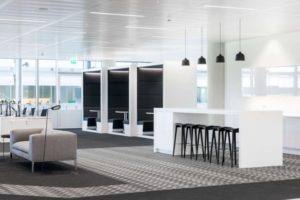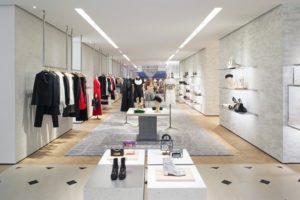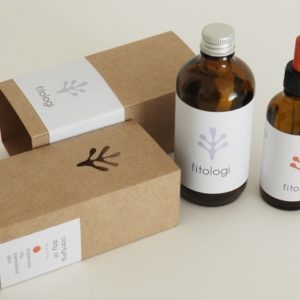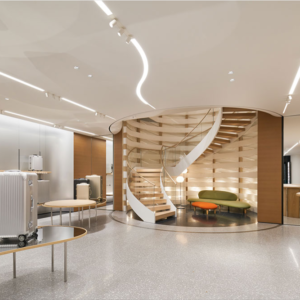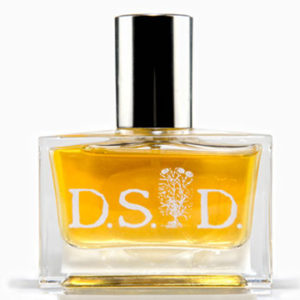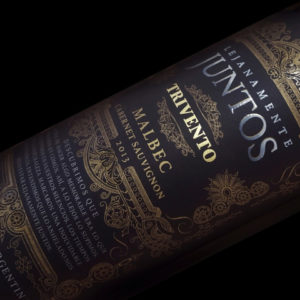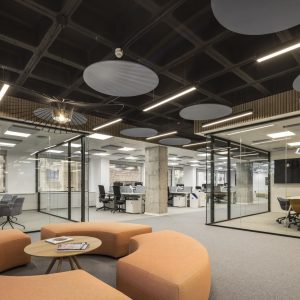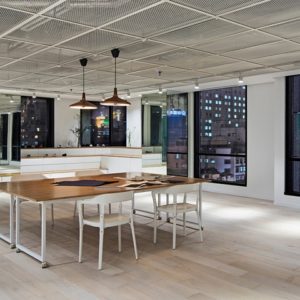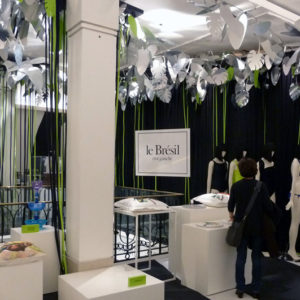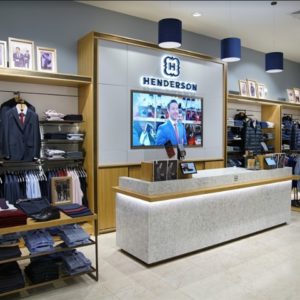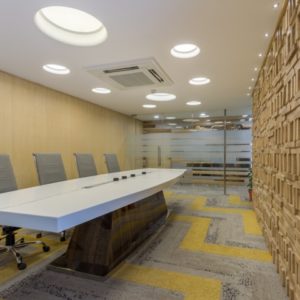
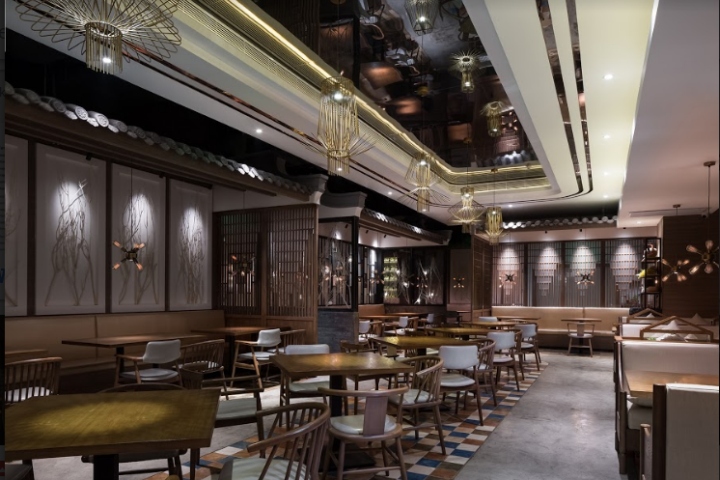

Teochew people are called Oriental Jews for their traits of shrewd, tenacity, and concentration, while the Teochew cuisine is popular at home and abroad for its exquisiteness, daintiness, and neutralization. Taking Teochew culture as design theme, Tangchao Wharf restaurant injects modern elements into the centuries-old tradition of this ethnic group in East Guangdong by blending modern elements into Chinese style design.
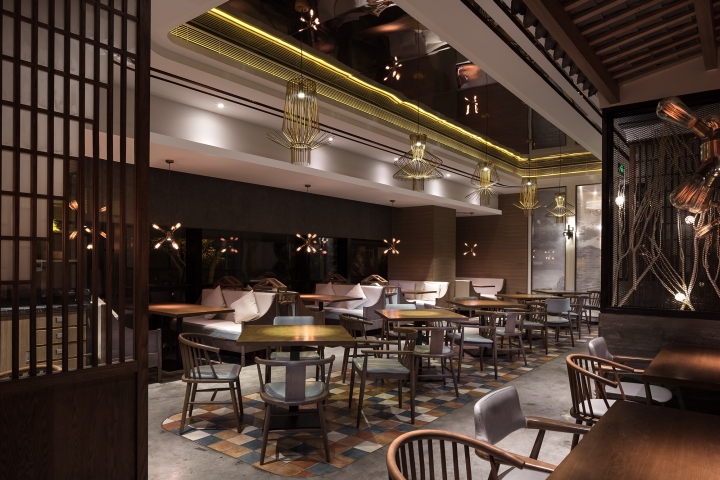
The shop front of the restaurant is connotative. The gable carries the meaning of five elements (metal, wood, water, fire and earth) reminds Teochew people of their hometown at a glance. The bull sculpture representing the famous local scenic spot Xiang-zi Bridge, the stands constructed by wooden benches, and the little crafts on the stands, make people feel like they have been back to their hometown which makes them feel anxious yet delighted.
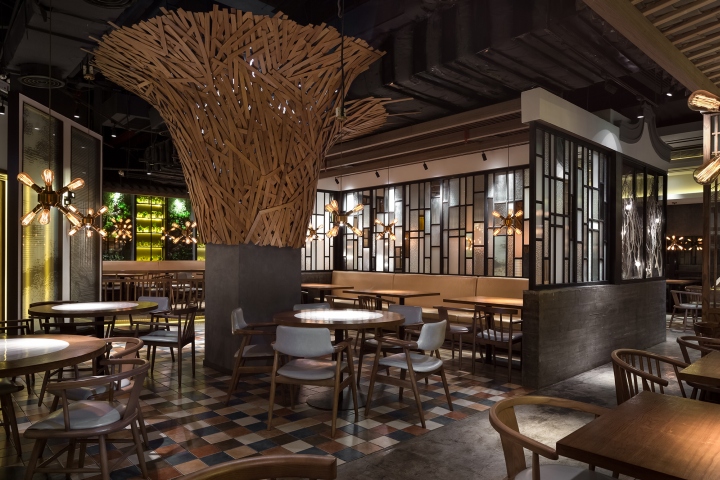
Following the Teochew civil residence’s concept of Xiashanhu and Sidianjin, the space is divided into antechamber, courtyard, and back hall, it also mixes old and new combining the existing scene. For example, the large pillar at the entrance is spliced by pieces of fresh-cut battens, creating a wild rural scene of “abig tree is a good shelter”.

Combined with the construction plan, it’s obvious that the dimensional periphery is a rectangular-ambulatory-plane shafts on pillars, and the inside is also a rectangular-ambulatory-plane; this is the extension of the Sidianjin form, similar with the three section compound of Teochew style. The division of each space emphasizes the alternative feeling of partly hidden and partly visible and avoids obturation and constraint of the traditional architectural form.
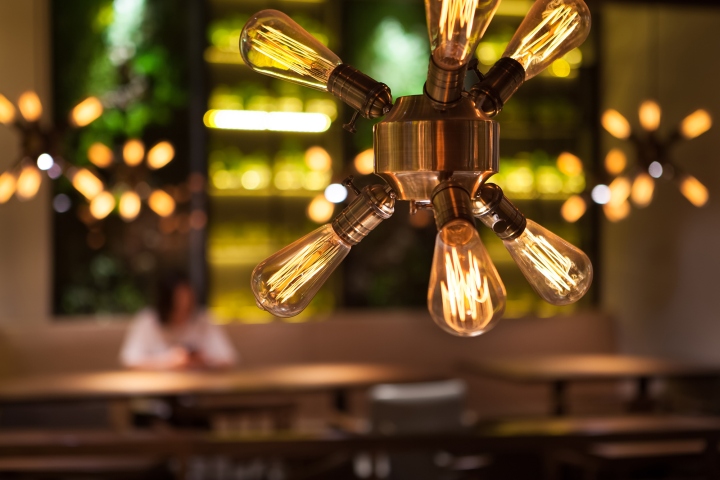
By extending the concept of five rows gable of the five elements to the indoor facade wall, the space presents a sense of solemn and gorgeousness, and serving as a link connecting the whole space at the same time. The gable, made from plank, accomplished together by onsite carpenter and the factory according to the modeling requirement, is accurate and almost perfect on proportion and details.
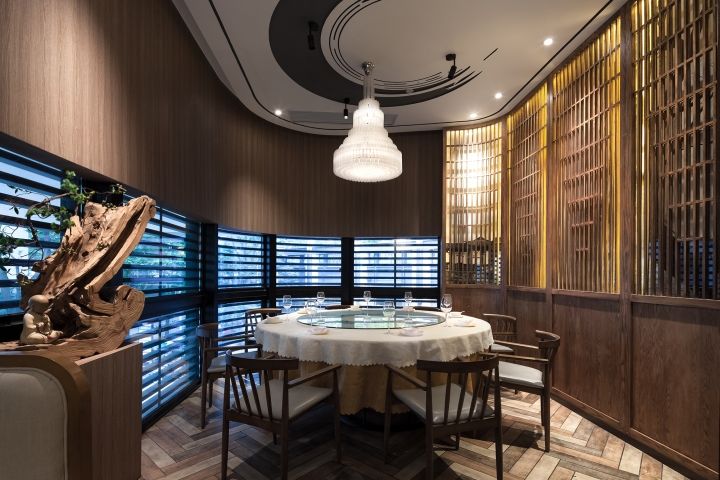
From the top down, the original complicated form is not retained in the design of cornice, gable, and partition, instead, simplified design method is adopted presenting by careful layout and array, thus, old mixes with new. Even image of moss and Boston ivy that coexist with the ancient walls of Teochew residence is shown here with the using of immortal grass, which is sealed in the glass bottles and distributed in array, in this way, a sense of simple and pure green is conveyed.
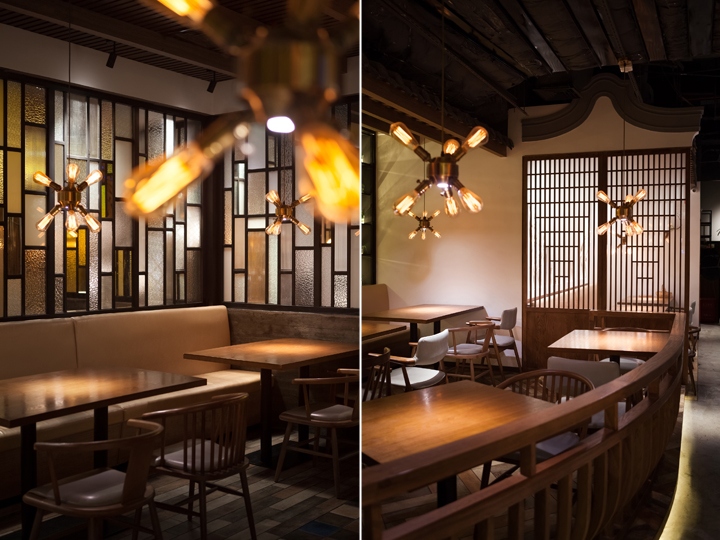
The alternative use of the partition glass with antique veins and fashion, dynamic mirrors widen the space. The cement is slightly disposed by being covered with reverse mould of old wood grain. The floor tiles, of which the inspiration comes from the old red bricks of the Teochew civil residence, add colors to the space. The chandeliers and vintage steel pipe tungsten lamp create mottled shadows.
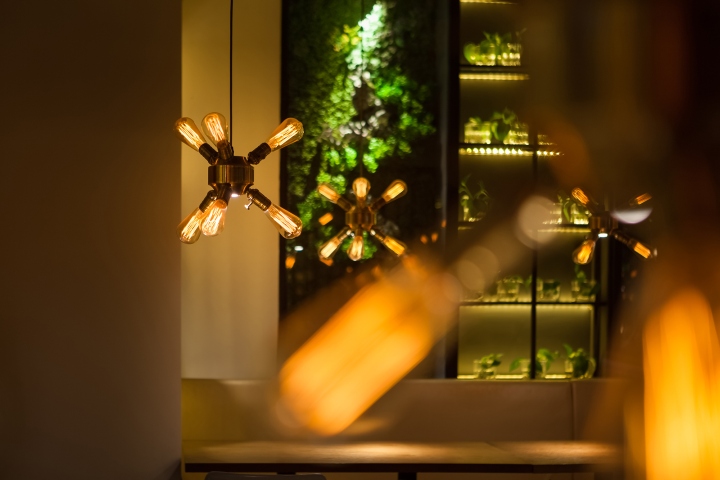
The modern Chinese style chairs are re-optimized combining with design concept. The huge Chinese calligraphy at the roof of hallway creates a literary atmosphere … Weini Design’s amazing skills in recording trace of time is hidden in the space details. The ethnic cohesion and insistence of protecting the tradition of Teochew people may bring a more expectant future for the issue of culture existence and new born in globalization.
Design: Weini Design
Photography: Ouyang Yun
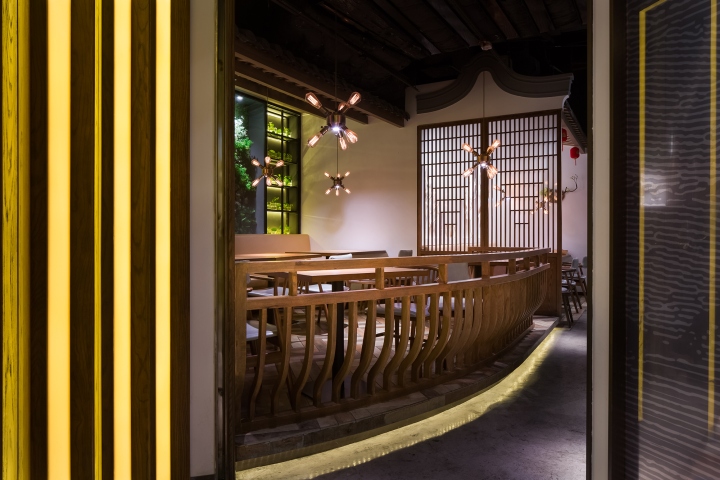
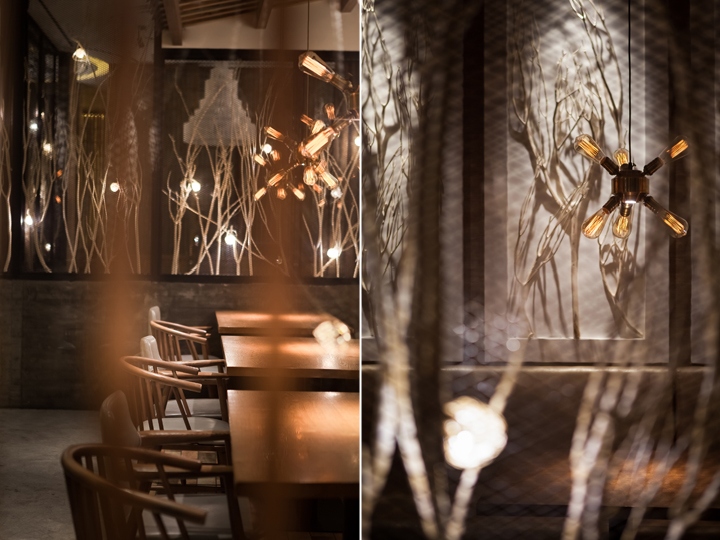
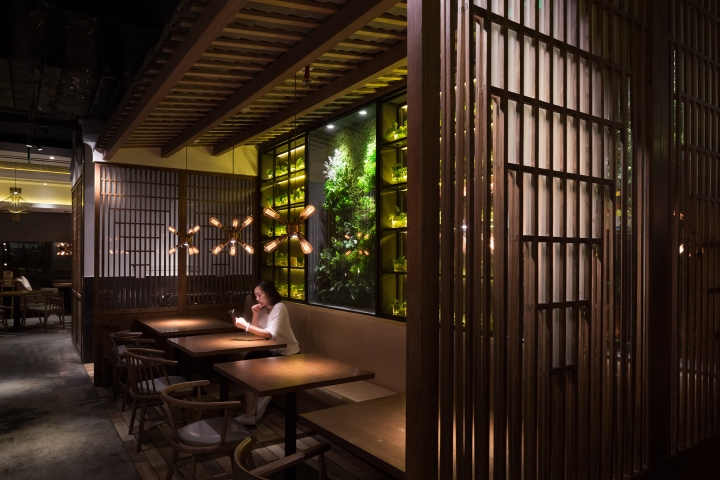
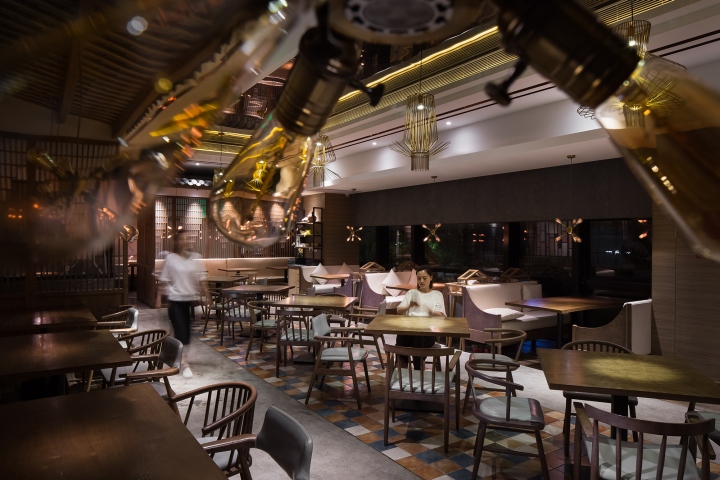
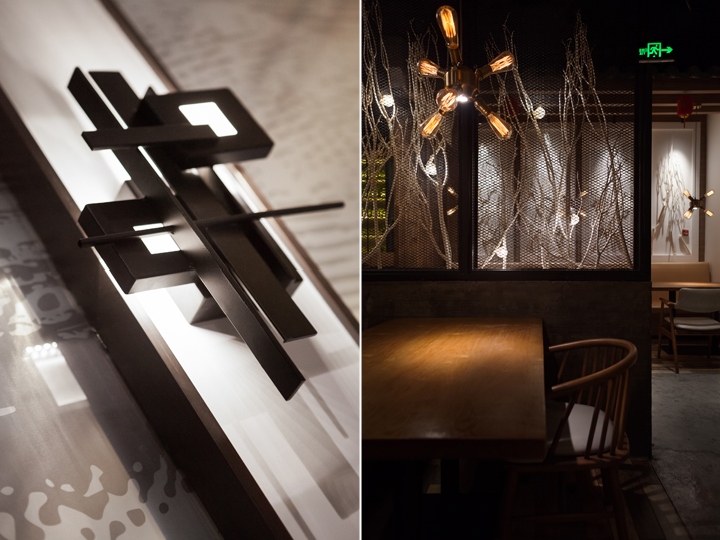
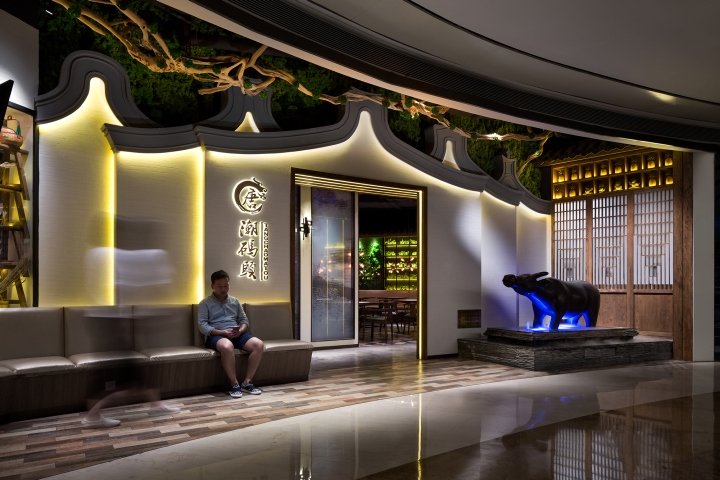










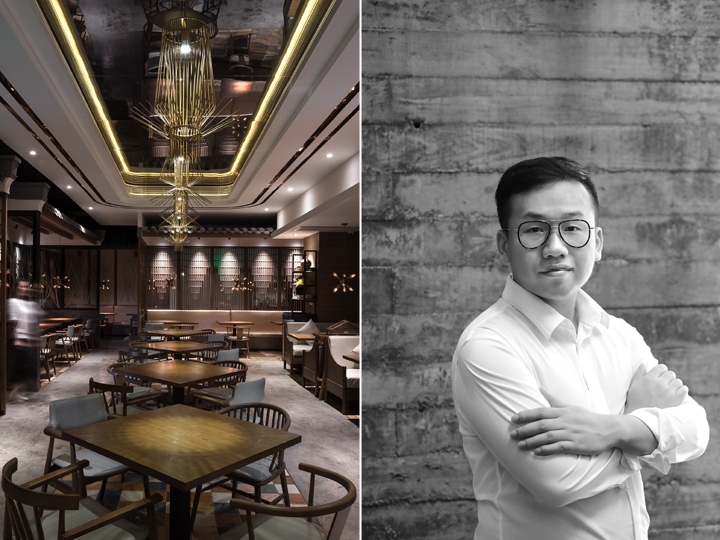



Add to collection
